
Atlanta | Gainesville | January – April 2023
President’s Message


We are excited to christen new frog tanks that recently were installed in the Fuqua Conservatory. They have been a dream of ours for years and finally worked their way up on the priority projects list to become a reality. The new tanks are designed specifically for the Conservatory and dramatically amplify the natural setting for the frogs, including organic material, beautiful orchids and other plants, and mist (See article, page 7). The combination assures great frog viewing and healthy and content frogs.
When I arrived at the Garden 20 years ago, we had robust discussions about the frogs and the question of “why” a botanical garden should even be conducting research on tropical dart frogs. The argument was that our access to live plant material and knowledge of terrarium care put us in an opportune position to experiment with naturalistic husbandry methods as part of a small group of researchers furiously working to save animals that were becoming extinct in mere months, not decades or centuries. We participated in captive breeding, documented success and shared data with countries in dire need of saving their native frogs.
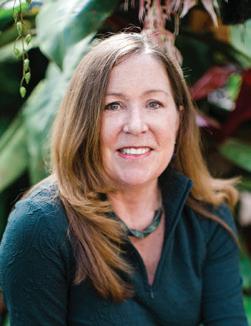



Decades later, our work has become a small but important part of breeding tropical frogs that were becoming lost in the wild due to the chytrid fungus. Countries of origin like Panama and Costa Rica now continue the breeding programs, working in collaboration with zoos, in an ongoing effort to save these magnificent species. Their work is essential as threats to natural environments such as climate change, development and the chytrid fungus continue to challenge the survival of many species.
Today, the Garden’s work with frogs is focused on education utilizing the Conservatory displays, programs and scheduled feedings for visitors and members to enjoy. The new tanks enable us to showcase new species and assure better viewing for all. We are proud of the conservation efforts by the Garden’s staff and volunteers, and continue to find small ways to save amphibians where and when it makes sense.
2 atlantabg.org | Atlanta
| Official News Publication for Members of the Atlanta Botanical Garden |
Vice President, Marketing: Jessica Boatright | Editor:
Mary Pat Matheson Anna and Hays Mershon President & CEO
orchiddaze

Celebrate the return of spring with February 18 – April 9, featuring strikingly beautiful, inventive murals by three Southeastern artists created especially for the Garden’s annual orchid exhibition.
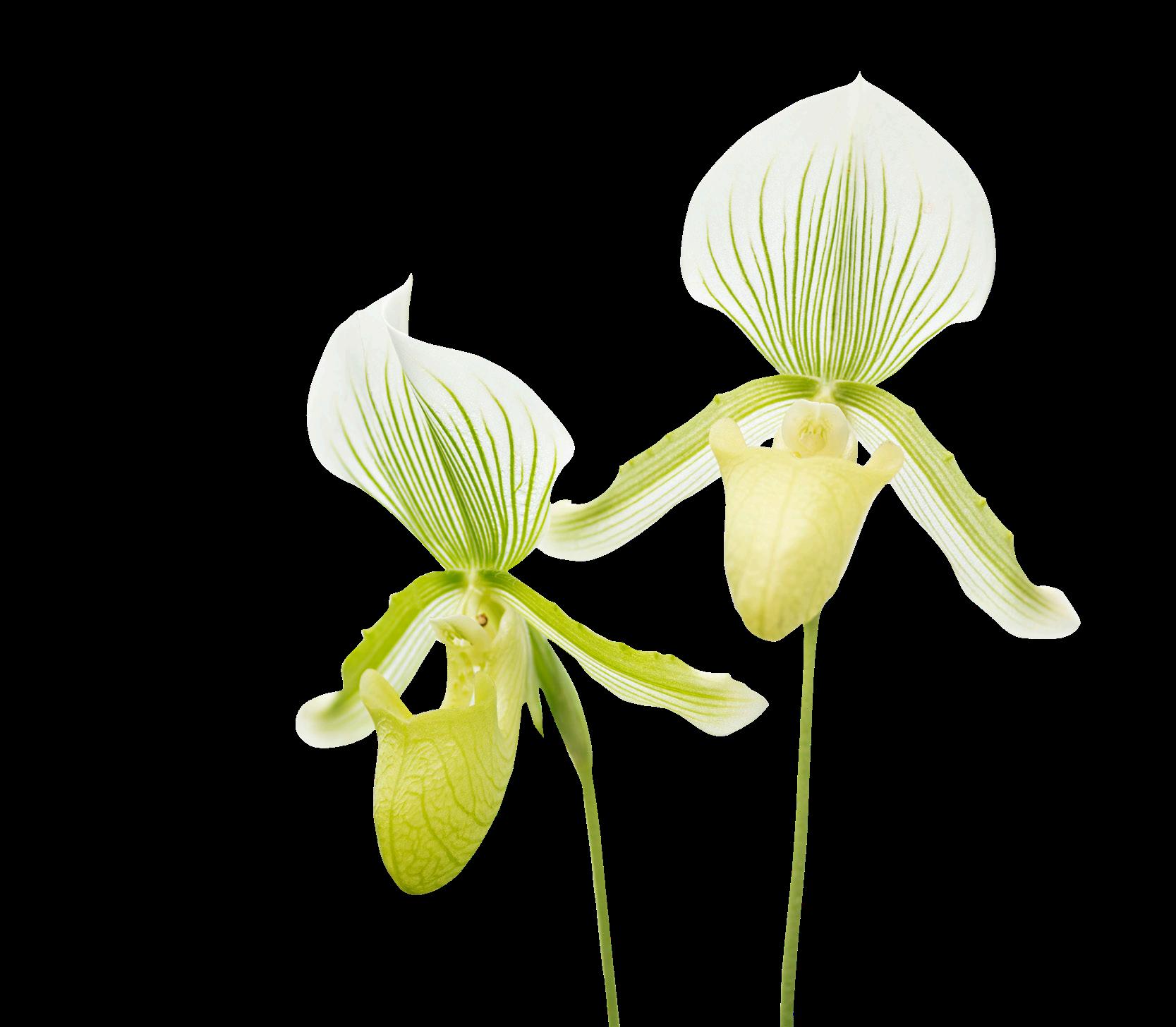




Complementing the character of the murals, displayed throughout the Fuqua Conservatory and Orchid Center, will be orchid landscapes designed by Tres Fromme of 3. Fromme Design. Look for an emphasis on warm-colored Dancing Lady Orchids in the Conservatory Lobby, Phalaenopsis throughout the Orchid Center Atrium and Slipper Orchids that take center stage in the Orchid Display House.
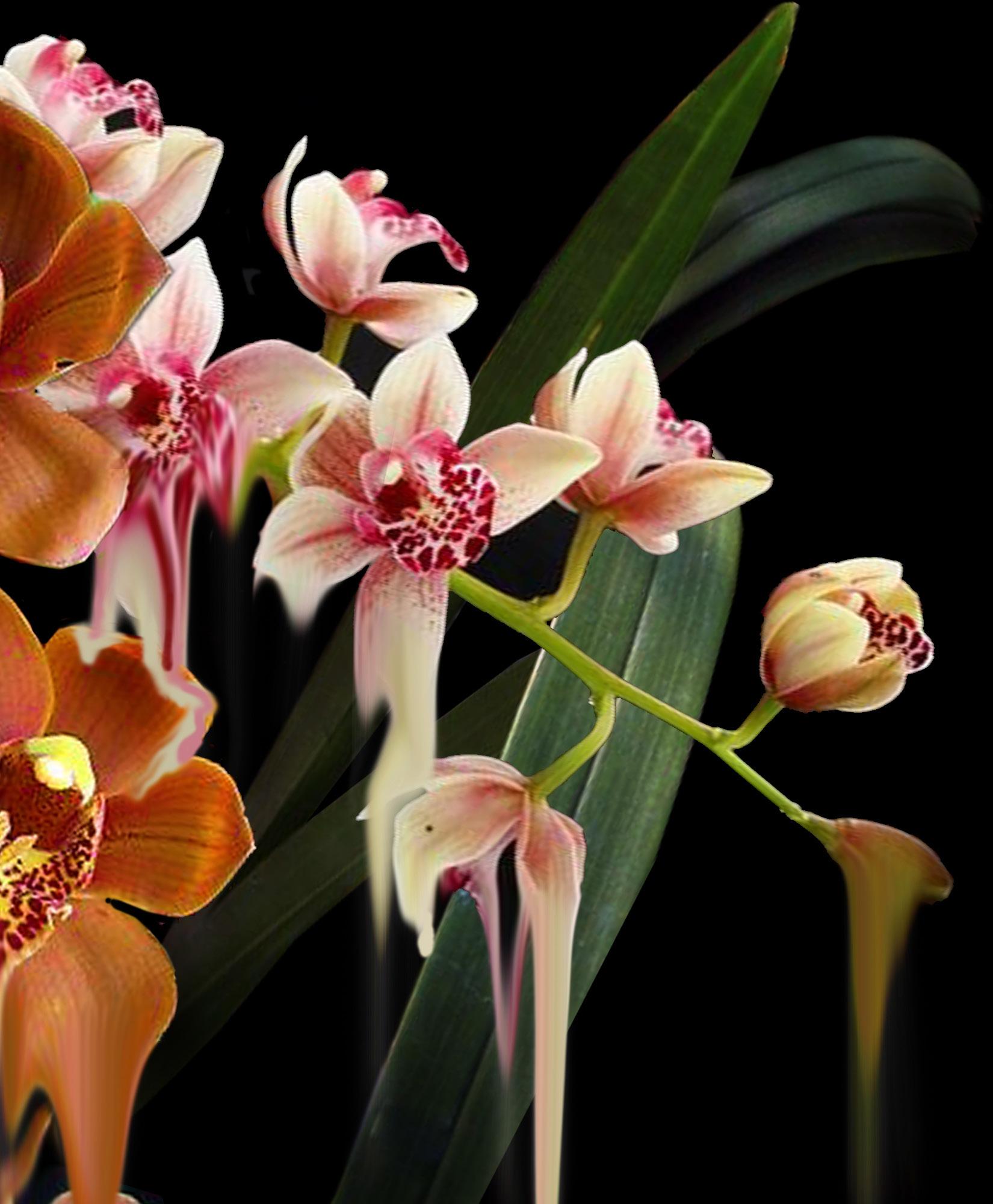

The featured mural artists are Niki Zarrabi and Janice Rago of Atlanta, and Lara Nguyen of Asheville.
is a second-generation Iranian-American, mixed-media artist, whose works range from intimately scaled mixed-media paintings to large-scale installations featuring abstract sculptures and outdoor murals. She has painted in such Atlanta street-art and publicmural events as Forward Warrior in Cabbagetown, the OuterSpace Project and ARToberFEST. She also partnered with the City of Atlanta to create an abstract mural as a downtown crosswalk at Broad and Zarrabi will create a bold and immersive mural in the Conservatory Lobby that features , who was born in Hawaii and grew up in Europe, is influenced by the cultures of the Pacific, Europe and south Georgia. Gallery works
Artist and educator LARA NGUYEN is a first-generation Vietnamese-American, who grew up in the Midwest. She has worked in a range of media and formats including painting, drawing, installation, performance and photography, and has completed eight public art murals in Asheville and Grand Rapids, Mich. Nguyen is co-owner of Stone Cloud Studio, which focuses on public art advocacy. As an associate professor of art at Warren Wilson College, she teaches design, painting and mural painting. She has spoken publicly about how absorption in her work as an artist and teacher has helped her since a 2018 cancer diagnosis. Her captivating mixed-media installation will be featured in the Orchid Display House.
3 Atlanta |
Becky Brinkman Fuqua Orchid Center Manager
Murals by inventive artists enhance annual exhibit of breathtaking blooms
Trolls: Save the Humans by Thomas Dambo – an exhibition featuring six of the artist’s enormous folklore-inspired sculptures built from reclaimed materials – will make its world premiere at the Garden February 18 – September 17.


The all-new traveling exhibition will amaze and delight visitors of all ages with its whimsical sculptures, each created from reclaimed wood, highlighting the artist’s passion as a recycling art activist. His vision is to create art that inspires people to explore and create new adventures in nature while demonstrating that trash can be turned into something beautiful and unique.
Trolls: Save the Humans blends art, nature and messages of sustainability in a unique outdoor art installation. The exhibition is Dambo’s latest exploration in crafting giant trolls – ranging from 16 to 50 feet tall – with an environmental call. In this new exhibit, Dambo tells an evolved story of listening and tending to nature, further building on the Nordicinspired tales and artist-made poems surrounding the many other larger-thanlife trolls that co-exist in various locations around the world.
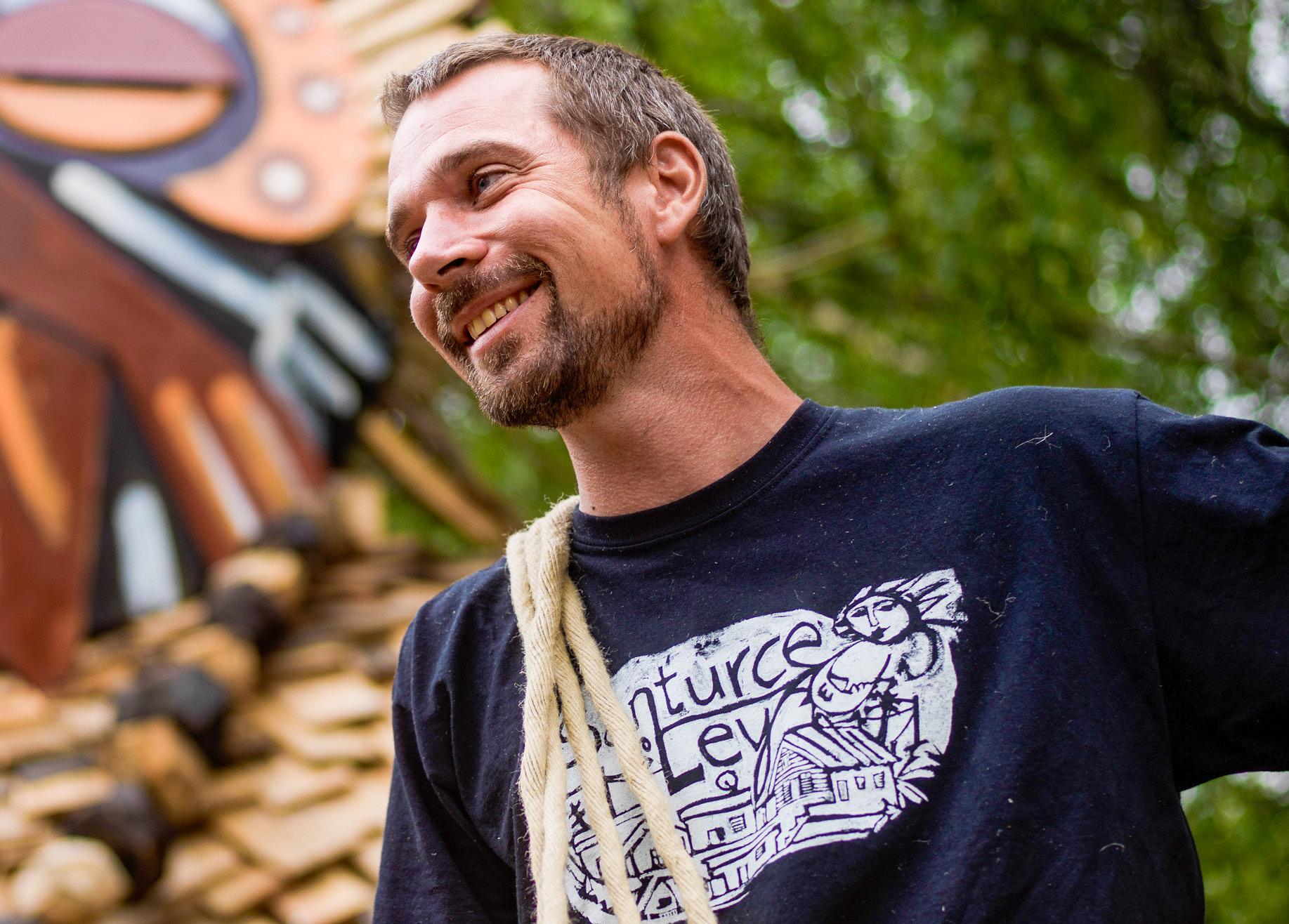
Presented by Imagine Exhibitions in collaboration with the artist, Trolls: Save the Humans is the latest chapter in the worldwide sculpture fairytale, written by Dambo. In this case, six young activist trolls have noticed that humans are disconnected from nature and have started harming the planet. The young trolls set out to help humans learn how to live in harmony with the planet. Full of personality and activism, each troll has a name and plays a distinctive role in the tribe, becoming role models for humans to learn from.
“With our mission to help save the planet through plant conservation and research, this exhibition is the perfect fit for helping us spread the sustainability
Garden hosts exhibition of giant whimsical sculptures made of reclaimed materials
4 atlantabg.org
Above: Artist Thomas Dambo. Right: Ibbi Pip, the Bridhouse Troll, is one of six sculptures in the exhibit.


atlantabg.org 5
Who’s ready for spring?
Gardening symposium moves the daydreaming needle
Ready to get into a springtime frame of mind? Join the Garden for a full day of new ideas from seasoned experts at the Spring Gardening Symposium on Saturday, Jan. 28.
The symposium is from 9 a.m. – 3:30 p.m. It will also be recorded and available for viewing for up to two weeks after the event. Registration fee is $99 ($89 for Garden members). To register, visit atlantabg.org.
The annual daylong event features five presentations:
Rewilding
Andy Pulte, University of Tennessee Plant Sciences faculty member and frequent contributor to gardening publications, discusses the succession planting of native and non-native plants to create lower-care, high impact landscapes.
Plants with Promise Ethan Guthrie, Horticulture Manager at the Gainesville Garden, highlights some of the new plants that might make their way into home gardens in the near future – including new specimens from the Garden’s International Plant Exploration Program.
Living with Bumblebees – By Design
John Whittlesey, garden designer and author of The Plant Lover’s Guide to Salvias, explores the natural history of bumblebees and how gardeners everywhere can intentionally plan and plant a garden for bumblebees.
Keep Growing: A Cultural Guide to Propagating More Gardeners
Jared Barnes, Associate Professor of Horticulture at Stephen F. Austin State University, host of The Plantastic Podcast
and author of the weekly newsletter plant•ed, delves into the great similarities between how plants are propagated and how youth are exposed to horticulture.
Invitations to and from the Garden: Cultivating Place & A Garden Culture of Care
Jennifer Jewell, celebrated author and host of the national award-winning podcast Cultivating Place, examines how the power of gardens and gardeners can be viewed through a lens of invitation.
Grab your most festive hat and head for an outdoor party like none other for giving the much-anticipated spring a warm welcome.
Enjoy cocktails, refreshments, live music and fun entertainment while strolling among hundreds of thousands of dazzling spring bulbs at Garden Party Saturday, March 25 from 5 – 9 p.m. Look for amazing photo opps, a Best Dressed Contest, flower arranging demos and more.

For ticket information, visit atlantabg.org.

| Atlanta
6 atlantabg.org
Welcome spring with a party!
Frogs leap to new homes in Conservatory Vanilla Sunday
The Garden’s frog collection has long held a special place in the hearts of guests and staff alike, and in February these amphibian friends will be treated to upgraded homes with four new exhibits in the Fuqua Conservatory lobby.


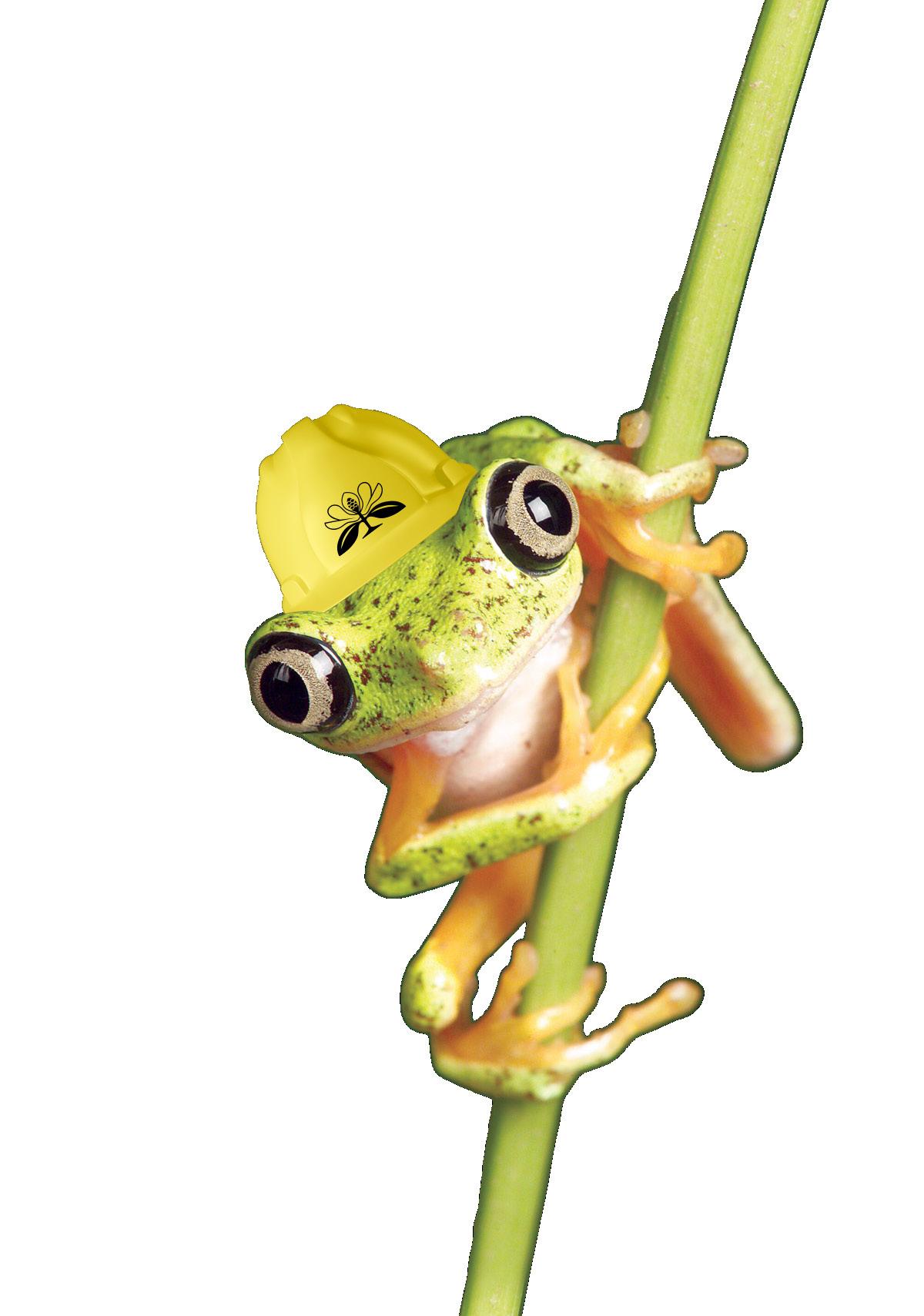
The new enclosures were designed to sit closer to the ground and are taller and narrower than previous exhibits, offering an improved viewing perspective for children as well as more practical space for taller plants and climbing frogs.
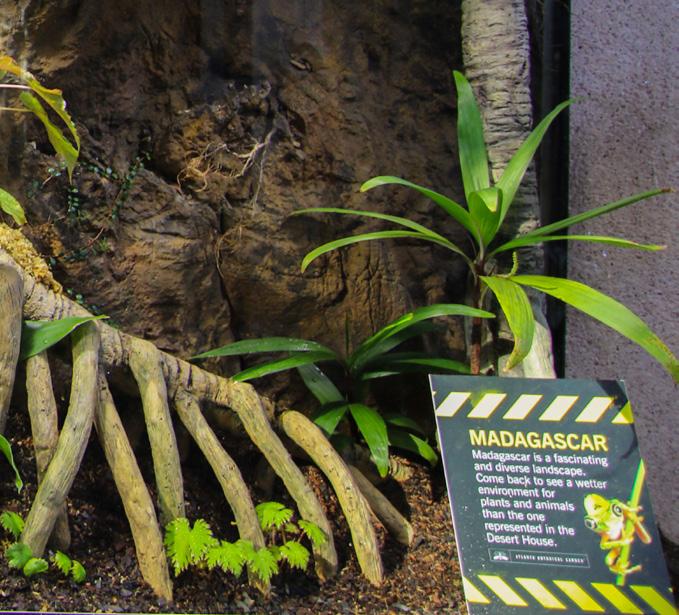
Each customized tank is fitted with its own mist and lighting systems offering the most current of technology. Though still located just outside the Rotunda entrance, the tanks’ dimensions make for a better fit to the lobby, improving traffic flow and the visitor experience.
Each tank has a regional theme – Madagascar, Panama, Ecuador and Colombia – and while they will always feature colorful frogs, they also will include some new surprises as well. The enclosures will showcase detailed interpretation explaining the concept behind each design as well as a more in-depth look at each animal species. Guests will become more acquainted with the new frogs displayed as well as native habitats. And finally, the tanks will allow the Garden to showcase some of its choice plant collections, with special emphasis on regionally appropriate selections.
David Ruland Greenhouse Manager
Celebrate the vanilla orchid on March 5 during Vanilla Sunday!
With Orchid Daze in full bloom, a visit to the Garden from 1 – 4 p.m. is the perfect way to shake off the winter blues. Indulge the senses and learn interesting info at vanilla discovery stations. Get up close with a vanilla orchid and learn how it flavors our favorite desserts. Watch a vanilla-inspired demonstration by a local chef, find out how to make your own extract at home and enjoy a mini vanilla ice cream sundae while supplies last.
FUN FACTS
• As the world’s most commercially significant orchid, there are more than 100 vanilla species, but only three produce the fruit that gives us vanilla.
• Only an estimated 5 percent of vanilla flowers produce fruits in the wild. Few bees indigenous to Mexico and Central America can successfully pollinate the vanilla orchid, and while a vine produces many flowers, each bloom lasts less than a day. Commercial producers therefore rely on hand pollination to ensure a viable yield from their crops.
After pollination, the vanilla orchid flower gives way to a fruit (“bean”) pod containing tiny seeds. Once harvested, the pod is cured and shrinks to about a quarter its original size.
Vanilla was originally used as a complement to chocolate treats. The Aztecs used it alongside other spices in their version of hot cocoa. Vanilla is still a common ingredient in chocolate desserts today.
Now an internationally-enjoyed scent and culinary flavor, vanilla no longer plays second fiddle to chocolate. It is the most consumed ice cream flavor in the United States, with chocolate as a distant second.
Thomas Jefferson is credited with bringing vanilla to the U.S. culinary market after tasting it in France. Even given its widespread popularity here, France remains the top consumer of vanilla, despite a population roughly 1/5 the size of the United States.
Heather Chiller, Public Programs Manager
Atlanta |
atlantabg.org 7
Discover the orchid origins of this alluring spice


Earth Goddess
The Earth Goddess, the Garden’s beloved mosaiculture icon, is celebrating 10 years of greeting guests.

What most don’t realize is that the giant sculpture of living plants began its journey in Atlanta long before it made its home in the Cascades Garden in 2013. It took years of evolving conceptual renderings, countless calls with engineers, scores of staff members and miles of hand-sculpted pencil steel to create the structure that graces the Garden today.

nature
Standing nearly 25 feet tall, this work of topiary-like mosaiculture is a masterpiece of twisted steel and tangled irrigation tubes –stuffed with enough soil to fill a swimming pool – that hosts up to 20,000 plants annually. With this spring’s makeover of new annuals, it will have sported nearly 200,000 plants within those luscious locks to date.
Earth Goddess began its life in a warehouse in Montreal, Canada – home to sculpture design experts Mosaiculture International of Montreal –where it was built as a single solid steel structure. After each steel rod was carefully bent and sculpted to perfection, she was carefully cut into more than 20 pieces to be loaded onto trucks for her journey to Atlanta.
The sculpture arrived in April 2013 fully planted and was put together like giant Lego bricks. In all the 10 years it has been at the Garden, it has never been planted in quite the same way. The horticulture team continuously tries new plants and patterns for the goddess’s hair to keep her look different from year to year. In fact, at times the Garden has planted a full test garden on the back side of the sculpture to evaluate how new types of plants will respond to the incredibly difficult growing conditions. That’s because every square inch of the sculpture is planted every year even though it typically is not seen from the back. Throughout the summer, three staff members hand-check the plants for watering needs, even though the sculpture has internal irrigation, and the plants are sheared every other week to maintain the form.
As temperatures cool in the fall, the plants give way to 24,000 dazzling lights as the sculpture is transformed into the Ice Goddess for the annual Garden Lights, Holiday Nights spectacular.

Whether guests prefer its look for winter or for summer, Earth Goddess touches every visitor that walks past it. To the staff, the icon represents Mother Nature, hope, peace, renewal – and a labor of love.
Jim Smith Horticulture Manager

Atlanta |
atlantabg.org 9
celebrates a decade of wonder, inspiration and
TOP: The sculpture’s hand arrives for installation in 2013. MIDDLE: Earth Goddess becomes Ice Goddess during Garden Lights, Holiday Nights BOTTOM: Thousands of living plant plugs are inserted into the sculpture.

10 atlantabg.org
The visual allure of tulips has drawn admirers for centuries. Native to modern day Afghanistan, Pakistan and surrounding areas, tulips gained a particular fondness during the Ottoman Empire when they were first planted in gardens and used in floral arrangements. As with all good garden plants, other gardeners had to have them, and it wasn’t long before their popularity extended to the Netherlands and beyond.
Yet many southern gardeners do not know that these tulips – known as species tulips – are hardy unlike the bulbs they plant in fall for producing brightly colored showy flowers in spring. Generally, species tulips are not as tall or large-flowered as the hybrids that get all the press. Often they grow only 6 to 12 inches tall, their flowers are only a couple inches wide, and they tend to bloom for up to four weeks.
Species tulips are elegantly beautiful in their own right, and many can be discovered in the Garden in March and April along Crape Myrtle Alee and in the Rock Garden and Conifer Garden. A few favorites include:
Tulipa ‘Lady Jane’
Bluish foliage and stem with coral and white flowers standing straight at easily 12 inches.
Tulipa clusiana var. chrysantha
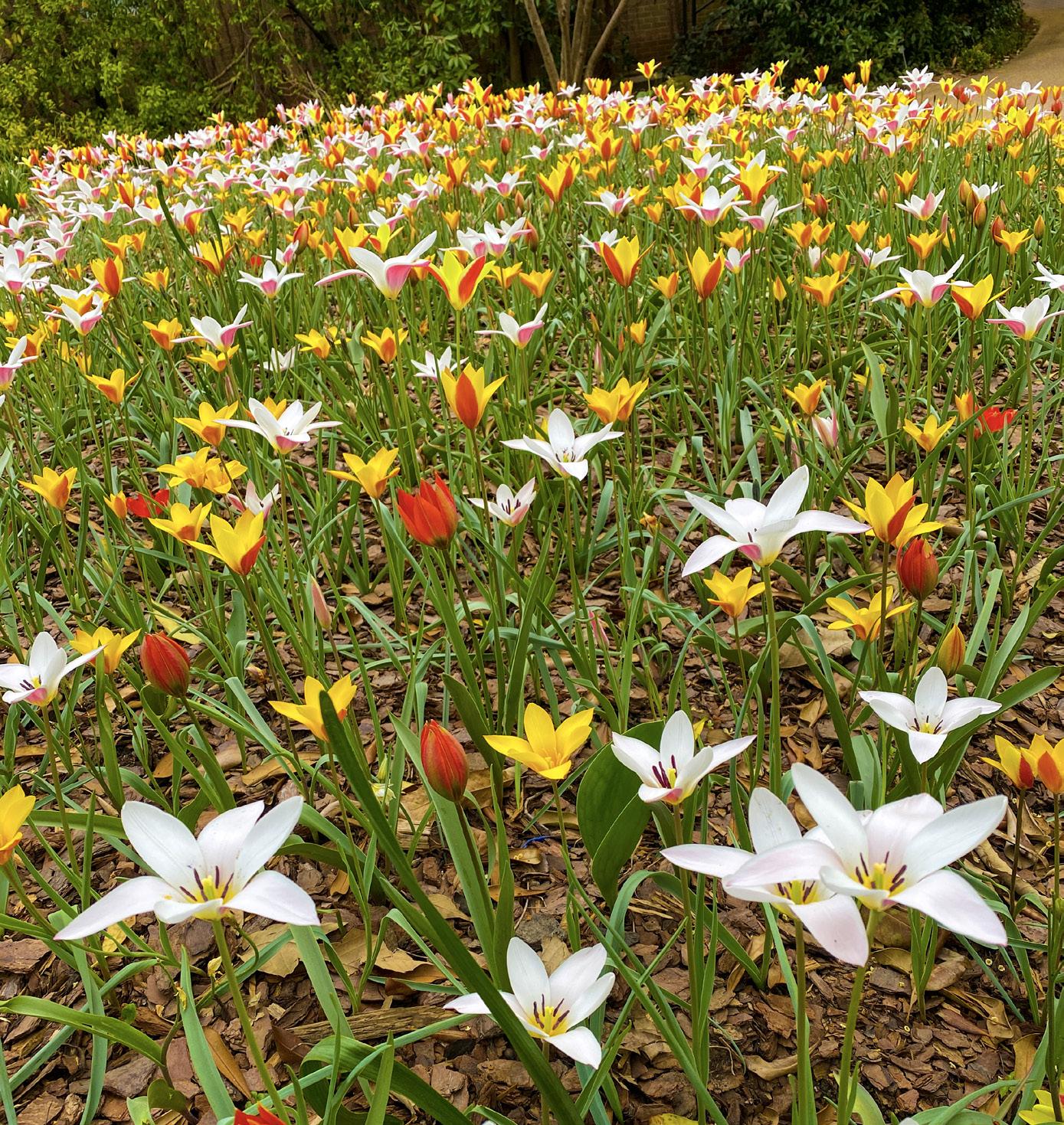
With similar height and foliage color, it differs with a sunny yellow and orange flower.
Tulipa turkestanica

Unrelentingly cheerful at only 6 inches tall but with clear white flowers with bright yellow centers.
Tulipa whittallii
Flowers of various shades of orange, making it look like it’s on fire, at only 6 inches tall.
Tulipa bakeri ‘Lilac Wonder’
A small gem at about 4 inches tall but demands attention when in full bloom.
The Garden’s annual spring bulb showcase
These species tulips make good choices for adding to the garden – best planted in fall like most spring bulbs – and will not disappoint if given good drainage and either full sun or partial shade. Many other species tulips are available, primarily through mail order. But beware: After growing these you may find yourself in pursuit of more. Take it from the earliest fans of species tulip from centuries ago!

atlantabg.org
Amanda Bennett
Vice President, Horticulture & Collections
For staying power this spring, choose lesser-known species tulips
features daffodils, crocuses, hyacinths, tulips and more throughout the early spring months of March and April. For updates on bloom times, visit atlantabg.org.
Tulipa ‘Lady Jane’
Tulipa bakeri ‘Lilac Wonder’
T. ‘Lady Jane’, T. chrysantha and T. whittalii
atlanta happenings
Trolls: Save the Humans by Thomas Dambo
Saturday, Feb. 18 – Sunday, Sept. 17
Experience an exhibition featuring six of artist Thomas Dambo’s enormous folklore-inspired sculptures built from reclaimed materials as it makes its world premiere at the Garden.

Valentines in the Garden
Saturday, Feb. 11, 7 - 11 p.m.
Bring your sweetheart for a romantic evening in the Garden, where fragrant orchids, live entertainment, dancing and refreshments set the mood. For ticket information, visit atlantabg.org.

Botanical Drawing Program
Learn to draw botanical specimens under the guidance of artist Carol Anne Sutherland. Beginning with principal drawing of the natural world in black and white, the courses develop technique until students gain the ability to dynamically capture majestic trees in graphite pencil and intricate orchids in colored pencil. Upon completion of the program, students will earn a Botanical Drawing Certificate. See the enclosed Education Brochure or visit atlantabg. org for details.

12 | Atlanta atlantabg.org
Orchid Daze
Saturday, Feb. 18 – Sunday, April 9
Explore murals by three area artists set against the backdrop of thousands of beautiful, fragrant orchids on display during the Fuqua Orchid Center’s annual exhibition highlighting winter’s favorite plant.
Atlanta Blooms!
March - April
Explore hundreds of thousands of tulips, daffodils, crocuses and hyacinths. Check out a variety of ways to grow bulbs, including container gardens and floating islands. Watch for updates on peak bloom times at atlantabg.org
Vanilla Sunday
Sunday, March 5, 1 – 4 p.m.
Surround yourself with the aromas and flavors of vanilla during a celebration of the orchid that yields this delicious spice. Savor an afternoon of vanilla cooking demos along with plant discovery and sensory experiences. Then enjoy a mini vanilla sundae.
Spring Break Family Fun
Monday, April 3 - Friday, April 7
10 a.m. – Noon
Need an exciting family activity during Spring Break? Visit the Garden and enjoy the wonders of springtime with fun, seasonal family activities.
Camellia Show
Saturday, Feb. 18, 1 – 5 p.m.
Sunday, Feb. 19, 10 a.m. – 5 p.m.
Experience “the rose of winter” with dozens of cut specimens during the North Georgia Camellia Society’s 74th annual Camellia Show. To exhibit or for more details, contact President@ northgeorgiacamelliasociety.org.

Sprouting Scientists
Tuesday, March 14, 10 a.m. - Noon
Little ones can be scientists, too! Visit hands-on learning stations focusing on the natural world. Presented in partnership with the Atlanta Science Festival.

Earth Day
Saturday, April 22, 10 a.m. - Noon
Celebrate nature! Take part in engaging family activities and special performances of The Lizard & El Sol by the Alliance Bernhardt Theatre for the Very Young.

atlanta happenings
Atlanta | atlantabg.org 13
A Note from the Director
Change
The most exciting happening is that the long-discussed parking addition is finally under way after some unexpected delays. This first phase of expanded parking should be completed by the end of the year, laying the groundwork for many exciting additions to programming and exhibits in 2024.
As part of the project, we are grading additional areas that will not be paved in the first phase. These leveled-off areas will be the site of a pollinator garden and raised beds that will be used to grow edibles – vegetables, herbs and unusual small fruit trees. These beds will allow us to not only teach adult classes on soil preparation, composting and edible gardening but also serve as a demonstration site for school groups.
A lovely addition to the walkway from the new parking area to the Visitor Center will be large evergreen Camellia japonica cultivars. These beautiful shrubs were donated by Dr. Del and Mrs. Caroline Mixon. The Mixons had been growing these Camellias, many propagated from cuttings, in their garden for more than 30 years but recently sold their property and generously offered the plants to the Garden. Spring will bring a kaleidoscope of pink, red and white flowers from this wonderful gift.
And spring also will also bring our newest exhibition, La Calavera Catrina, opening April 1. The exhibit, presented by Denver Botanic Gardens, features nine joyful, large-scale skeleton sculptures that are one of the most recognizable figures of Day of the Dead. Watch for exciting programming and colorful annual displays in conjunction with La Calavera Catrina!
Newcomer success
Garden helps immigrant students with science instruction
The Gainesville Garden’s horticulturists have launched a cooperative program with Hall County Schools to help bring high school-aged immigrant students up to speed in science instruction and narrow any cultural barriers they might face.
Located at the Jones Learning Center at the Ivester Early College in Hall County, the new Newcomer Academy program serves as an intensive immersion program for immigrant students. During the two-semester program in language arts and science, the students spend part of their day at the center and part in regular high school classrooms.
Their science/horticulture instructor, Michelle Conable, is working with the Garden’s horticulture team to create learning-based work opportunities for the students, who visit the Garden once every two weeks.

On their first visit, the students cleaned Plum Yew (Cephalotaxus) seed. Plum Yew is a conifer that produces fleshy seeds, and each seed has to have its fleshy covering removed, then the seeds are rinsed, dried and packed for storage. As a result, the students had the opportunity to learn about
plant classification (conifers vs. higher flowering plants), seed distribution in nature, different types of conifer seed and how botanical gardens share plants via seed.
Students have assisted with other projects, including in the Children’s Garden where they learned about pollinators, seed germination, soil preparation, plant life cycles and soil fertility. They also have helped with the seasonal change-out of containers at Gainesville Renaissance, a cooperative project among the Garden, Brenau University and the City of Gainesville.
The students will take this newfound knowledge about container gardening, and plant and maintain containers as part of a service learning project at several schools and nursing homes near their campus.
“Working with these students is so enjoyable,” Senior Horticulturist Kendal Busher said. “We get to share our horticultural knowledge with the students as well as help them practice their English while they work. It really is fun for all of us!”
Mildred Fockele Gainesville Garden Director

14 atlantabg.org | Gainesville
is on the way for the Gainesville Garden!
Mildred Fockele
Gainesville Garden Director
Students help the horticulture team plant new container gardens at the Gainesville location.
Baptisia beauty
Herbaceous perennial with spiky flowers a great choice for spring
A resilient wildflower native to the woodlands and grasslands of the Southeast, Baptisia is an attractive plant specimen because of its vigor and overall ornamental interest. And the plant’s multi-stemmed habit makes it a prolific bloomer.
An undemanding plant, Baptisia (in the legume family) adapts to a variety of conditions. The plants tolerate soils that range from clay to dry and sandy. Plant

Baptisia ‘Lunar Eclipse’ False Indigo
An entrancing upright perennial boasting multi-colored blooms, this beauty emerges with pale lemon-over-cream blooms, changing into cream, pale lilac and ultimately purple-blue. Lunar Eclipse makes this exquisite color transformation ornamentally.
them in early spring in full-sun, where they will bloom for two to three weeks between March and early May. Once established, they are difficult to transplant because of their deep root system.
Here are a few to consider – all grown in the Gainesville Garden:
Hare Assistant Horticulturist
Discovery Stations
Saturday mornings
Experience all things plants with topics like plant fossilization, uses, cells and more.
Adult Education Classes
January – April
Topics include beekeeping, meadowscaping, photography, container gardening, painting and more. Details at gainesvillegarden.org.
La Calavera Catrina Exhibition
Saturday, April 1 – Sunday, Aug. 27
Explore nine colorful, larger-than-life skeleton sculptures of La Catrina, one of the most recognizable figures of Día de los Muertos (Day of the Dead), by Los Angeles artist Ricardo Soltero.
Spring Break Week
Monday, April 3 - Friday, April 7 10 a.m. - Noon
Celebrate the transition from winter to spring with delightful family activities inspired by the colorful, bountiful and blooming Garden.
Member Spring Plant Sale
Friday, April 21
Enhance your landscape with a variety of offerings available at the annual plant sale, featuring unusual native and non-native plants grown in the Gainesville garden.
Baptisia sphaerocarpa
‘Screamin’ Yellow’ False Indigo
gainesville happenings
Baptisia ‘Deluxe Pink Truffles’ Decadence®
A Proven Winner cultivar with a graceful color evolution of clear soft pink to rich mauve and ultimately light lavender as the blooms age, ‘Deluxe Pink Truffles’ displays the expected performance of Baptisia, yet its compact habit makes it easier to maintain.
Baptisia ‘ Cherries Jubilee’ Decadence®


This is a floriferous Baptisia bearing robust spikes of golden-yellow and cinnamon colored blooms. During the peak bloom, mature clumps produce masses of inflorescences that result in a striking display. ‘Cherries Jubilee’ belongs to the Decadence series, known for its desirable flower colors and compact habit.
Another floriferous cultivar that is destined to stun and impress, this selection showcases dazzling yellow inflorescences stacked upon one another, resting on dense blue-green foliage. ‘Screamin’ Yellow’ is actually a selection of a straight species chosen for the brightest yellow.

Gainesville |
Kenya
Member Spring Evening
Monday, April 3, 5 – 8 p.m.
Enjoy a mythical evening of exploring the six giant sculptures of Trolls: Save the Humans by Thomas Dambo while enjoying whimsical entertainment, live music and family-friendly activities – and just in time for the spring bulbs!

CONTRIBUTING & ABOVE
Light Bites & Garden Insights
Monday, February 27, 5:30 – 7 p.m.
Contributing-level members and above are invited to a presentation about the Garden’s orchid collection while enjoying light refreshments. Look for an email with details. To upgrade to the Contributing level, call 404-591-1544.
DIRECTOR’S CLUB & ABOVE
Orchid Daze Soiree
Thursday, March 16, 5:30 - 8:30 p.m. Orchid Daze Soiree is an elegant event to remember. Members of the Director’s Club and above are invited to view the season’s most stunning orchids and enjoy a cocktail reception with entertainment, tasty hors d’oeuvres and desserts.

To upgrade to Director’s Club or one of the Circle levels of membership, call 404-591-1538.
Member Day
Saturday, April 29, 11 a.m. – 2 p.m.
GAINESVILLE: Celebrate Member Day in Gainesville with special entertainment, treats and the debut of the art exhibition
La Calavera Catrina! Look for an email with details.

planthotline
commonground
SUPPORT THE GARDEN AS A VOLUNTEER!
Turn over a new a leaf in 2023! Winter season volunteer orientation sessions will include:
• Children’s Tour Docent: Learn to lead children’s groups on guided tours. This seven-class session on Wednesday mornings begins January 25. Docents, in addition to leading groups, are invited to monthly lunch meetings and field trips. Interview required.
• Garden Essential Maintenance: Assist the staff with outdoor gardening tasks one weekday morning a week. Under the direction of horticulture professionals, help weed, prune, plant, harvest and perform other basic gardening tasks.
• Discovery Volunteers: Teach Garden visitors about plant collections, conservation work and current exhibitions. Volunteers are given talking points and props to answer questions and provide information to enhance the visitor experience.
To learn more contact Volunteer Manager Josh Todd at jtodd@atlantabg.org.
404-888-GROW planthotline@atlantabg.org
Consider planting the bulbs outside for the next spring bloom season. After the foliage in the pot has died back, allow the soil to dry out and the bulbs to go dormant. You can store the bulbs in a cool dry place until time for spring planting. Then plant the bulbs as you would any other spring bulb. You may not have flowers the first year, but you should see flowering the second year after planting.
ORG U.S. Postage PAID Permit No. 1162 Atlanta, GA
Atlanta Botanical Garden 1345 Piedmont Avenue, NE Atlanta, GA 30309 Address Service Requested NONPROFIT
membersonly QUESTIONS? Call 404-591-1539 or email membership@atlantabg.org
I RECEIVED SEVERAL POTS OF AMARYLLIS BULBS AS HOLIDAY GIFTS. WHAT SHOULD I DO WITH THEM AFTER THEY BLOOM?
16 Clippings is available online at issuu.com/atlantabotanicalgarden


















































